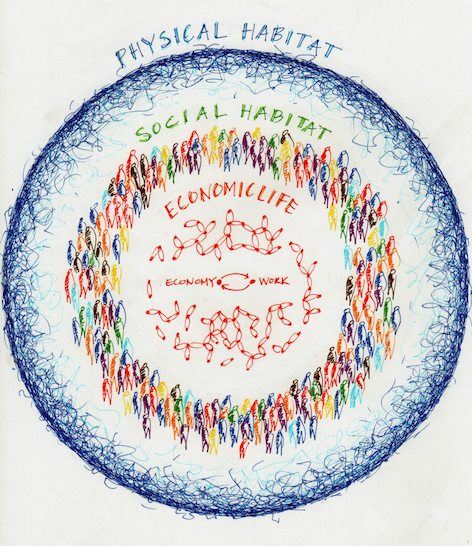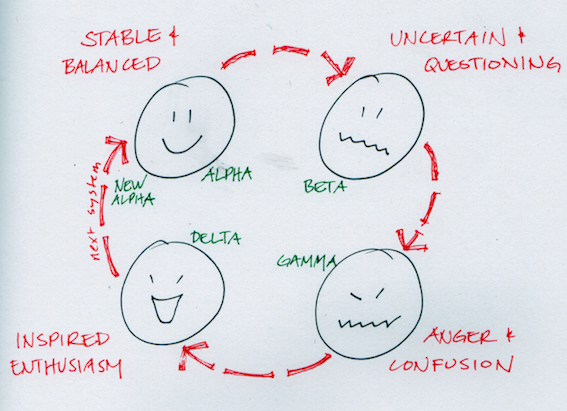From 2005 to 2007 I had the best job in the world, full of challenges at a fast pace. I was running the planning and development department for North America’s fastest growing municipality: the Regional Municpality of Wood Buffalo in the heart of Canada’ oil sands. Political, cultural, social, environmental and economic struggles were the norm, and in the middle our municipal government with a little department with few people to do the work that needed to be done. I know now that the whole time there was something bothering me, a little itch that came and went. W. Timothy Gallwey, in The Inner Game of Work, perfectly describes my itch: performance momentum.
Not all movement or action taken in our work actually moves me, or the organization I serve, forward. Gallwey: “There is a kind of activity that most of us are very familiar with that is not done with conscious intent or awareness of purpose. I call it performance momentum.” Most often it is ‘busy’ work, work that makes us look (and feel) like we are doing something of value. We get energized by the adrenalin and even panic to get things done. We get galvanized by the drive to get things done. And we lose sight of purpose and priorities.
I recognize this phenomenon in groups of people and individuals. We each have moments when we have the foot on the gas regardless of whether we have traction, when we assume that having a foot on the gas is always a good thing. We must always check to see if what we do is effective. We need feedback loops and we need to be open to hearing the messages of the feedback loops.
A city, an organization, a person that is intent on doing things – without a clear and conscious purpose – suffers from performance momentum. It could be connected to a need to be doing, or seen to be doing. We collectively create this culture for ourselves and for each other.
When I get caught in performance momentum, I get tired and unable to do the work well for long. Yet stepping out of performance momentum is not a license to not perform. There is certainly work to be done – and work to be done in a timely manner. The catch is knowing if the work taking place is the right thing to do at the right time, recognizing the work’s purpose. It is about working consciously.
I didn’t reach this understanding until I gave myself time and permission to stop and look at what was bothering me – at what and why I was itchy. I started to scratch this itch five years ago, and as usually what happens with an itch, it has become itchier and itchier. My choosing to write and explore is a risk I welcome: I may find relief, or I may find that I set off deeper, longer lasting itches.
So what’s the opposite of performance momentum? Performance with purpose, full of feedback loops that tell us when we are on track. Noticing when we have traction, rather than wheels spinning, is part of our learning journey.
_____ _____ _____
This post forms part of Chapter 4 – An Uneasy Journey, of Nest City: The Human Drive to Thrive in Cities.
Nest City is organized into three parts, each with a collection of chapters. Click here for an overview of the three parts of Nest City. Click here for an overview of Part 2 – Organizing for Emergence, chapters 4-7.

